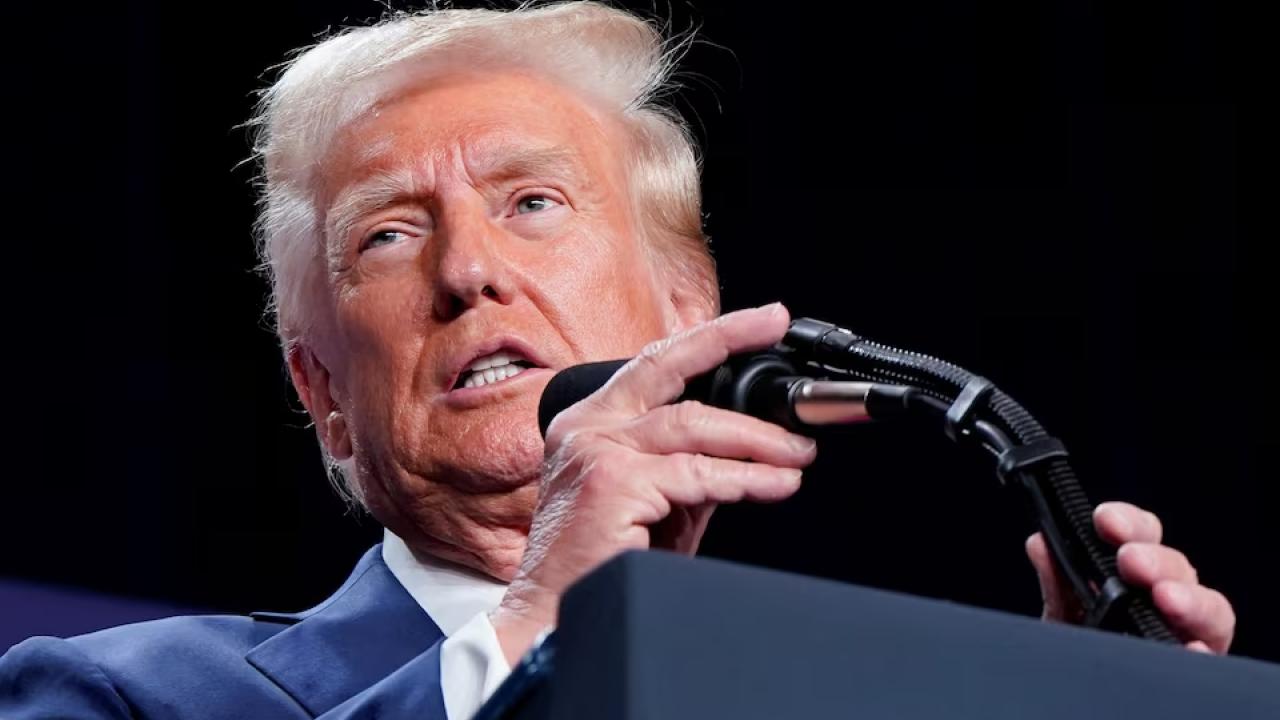
The US president plans to follow through on his promise to impose tariffs on Canada and Mexico on Saturday, White House spokeswoman Karoline Leavitt told reporters on Tuesday.
U.S. President Donald Trump is sticking to his plan to impose 25 percent tariffs on imports of goods from Mexico starting Saturday, White House spokeswoman Karoline Leavitt told reporters.
Leavitt said Tuesday that tariffs on imports from Mexico, as well as those from Canada, remain scheduled to begin Feb. 1 unless both countries help address fentanyl trafficking and immigration issues.
Last Thursday, Trump declared progress in reaching a compromise with Mexico regarding their concerns on issues related to migration and drug trafficking in the United States.
"We're dealing with Mexico, I think, very well, and we just want to be treated fairly with other nations," Trump said while participating remotely in a meeting of the World Economic Forum, held in Davos, Switzerland.
Following this message, Kenneth Smith, international trade specialist and partner at AGON, made the following comment: “Just because Trump said in Davos that things are 'going well' with Mexico and attacked Canada does not mean that tomorrow he will not come out with ten times more aggressive comments against Mexico. That is his style: to generate disruption and uncertainty.”
Regarding Canada, Trump also said in Davos that the United States has found it “very difficult to deal with Canadian authorities over the years.”
"We don't need them to make our cars and they make a lot of them. We don't need their wood because we have our forests, gas and oil, we have more than anyone else," he added, referring to the Canadians.
Leavitt noted that Trump is also still considering new tariffs on China for next Saturday.
Last Friday, the United States Trade Representative (USTR) launched two reviews, one focusing on unfair trade practices and another to assess whether China has met its commitments in its phase one agreement with the United States.
An analysis by Banco Base concludes that the concentration of exports to the United States leaves the door open for it to be used to pressure the Mexican government on issues that may not be related to trade, as could occur during Trump's second term to achieve objectives of immigration control, border security and stopping the flow of narcotics.
“One positive aspect of the growth in exports to the United States is that Mexico has specialized in manufactured products, which are part of key supply chains for the United States. This makes them difficult to replace quickly,” said Gabriela Siller and Jesús Anacarsis López, analysts at Banco Base.
In Mexico, total exports account for 37.97% of the Gross Domestic Product (GDP), according to data from 2024 to the third quarter, and its growth is supported by trade with its North American partners.
Mexico is the United States' main trading partner with 15.4% of total trade as of November 2024 (latest data available), followed by Canada with 13.8%, China with 11.3%, Germany with 4.3% and Japan with 4.2 percent.
Together, these five countries account for 50.2% of total U.S. trade.
According to Banco Base, from 2016 to date, China has lost 7.66 percentage points in its share of US imports, as a result of the trade war and the relocation of companies. This has benefited Mexico, which has gained 2.16 percentage points in its share of US imports.
How did the weight react?
Hours before the close of trading on Tuesday, the Mexican peso trimmed its gains after the White House said the February 1 date for imposing tariffs on Mexico and Canada remains in place.
The exchange rate ended the day at 20.5402 units per dollar. Compared to the figure of 20.7278 pesos recorded yesterday, according to official data from the Bank of Mexico (Banxico), the movement represented a gain of 18.76 cents, equivalent to 0.91 percent.
The price of the dollar traded in a range between a maximum of 20.7831 units and a minimum of 20.5223 units.
The peso rebounded after it lost just over 2% yesterday, in a fearful market reaction following brief trade tensions between Colombia and the United States that revived fears over Donald Trump's tariff policy over the weekend.









